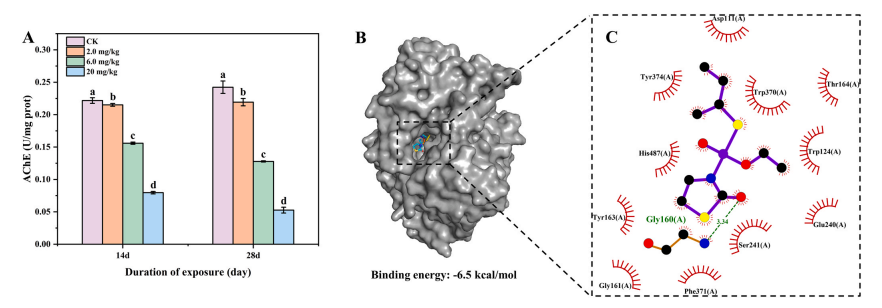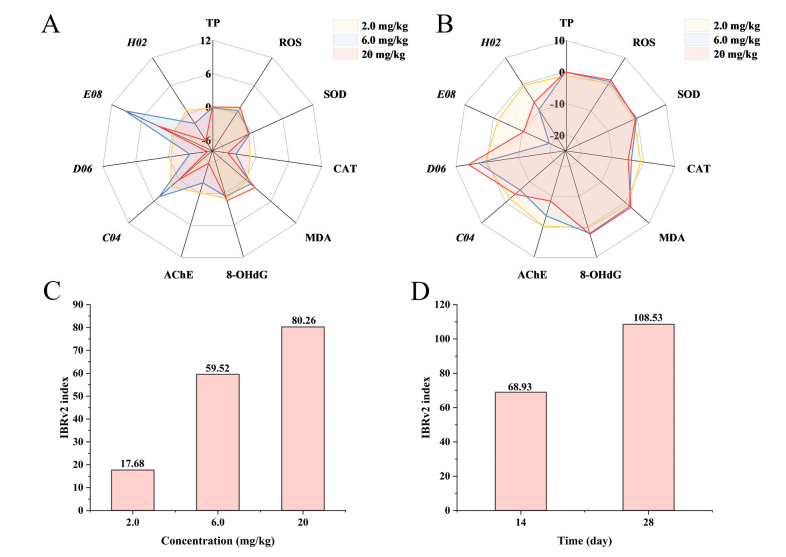Welcome to choose us, Shanghai Hengyuan Biological Technology Co., Ltd.!Free service hotline:400-0899-208
Language:CH Security check
- Location:
- 首页>
- News>
- Industry news>
- Explanation of refer...
Industry news
Explanation of references cited in the earthworm 8-hydroxydeoxyguanosine (8-OHdG) ELISA kit
[Hengyuan Literature] Reference Explanation: Today, the editor will share with you a relevant literature on the earthworm 8-hydroxydeoxyguanosine (8-OHdG) ELISA kit. This SCI literature was successfully published in the authoritative issue of the Journal of Hazardous Materials - Fosthiazate, a soil applied nematide, induced oxidative stress, Neurotoxicity and transcriptome errors in earthworm (Eisenia fetida), IF impact factor 13.6 points!
An excellent SCI literature requires a lot of effort and sweat, and many of the experimental methods and ideas in it are worth learning. Through literature, we can also have a better understanding of the product. If you have also published SCI literature using the ELIA reagent kit of the Hengyuan brand, we welcome you to actively participate in our "Winning Scholarship through Paper Publishing" activity. Service hotline: 400-0899-208
Fosthiazate is a widely used organophosphorus nematicide that resides in the soil and controls soil root-knot nematodes. However, whether it has toxic effects on non-target soil organisms such as earthworms is unclear. Therefore, in this study, a 28-day experiment of fosthiazate exposure was conducted using the Eisenia fetida as the model organism. The results showed that fosthiazate stress caused excessive production of reactive oxygen species (ROS), increased the levels of malondialdehyde (MDA) and 8-hydroxy-2-deoxyguanosine (8-OHdG), and decreased the activities of superoxide dismutase (SOD) and catalase (CAT), suggesting that fosthiazate induced oxidative stress and DNA damage in E. fetida. Acetylcholinesterase (AChE) activity was significantly reduced, and the expression of its related functional genes was also altered, demonstrating that fosthiazate damaged the nervous system of E. fetida, which was further confirmed by AlphaFold2 modeling and molecular docking simulations. Furthermore, Kyoto Encyclopedia of Genes and Genomes (KEGG) enrichment analysis indicated that fosthiazate exposure may induce apoptosis, inflammation, and viral infection in E. fetida, which adversely affect the organism. This study provides reference data for the ecotoxicity of fosthiazate.
Literature Appreciation:
【Document Title】Fosthiazate, a soil-applied nematicide, induces oxidative stress, neurotoxicity and transcriptome aberrations in earthworm (Eisenia fetida)
【author】Can Wang , Xiangfeng Yao , Xianxu , et.al
【Affiliation】(Shandong Agricultural University)
【Products cited in literature】
Earthworm 8-hydroxydeoxyguanosine (8-OHdG) ELISA kit
【keyword】Oxidative stress ,Neurotoxicity ,Transcriptomics ,AlphaFold2 models ,Molecular docking
【DOI】https://doi.org/10.1016/j.jhazmat.2023.132865
【Publishing journals】《Journal of Hazardous Materials》
【Original product citation】
In this study, single cell gel electrophoresis (SCGE) and 8-OHdG content detection were used to evaluate the effect of fosthiazate on DNA damage in E. fetida. The SCGE refers to the method of Li et al. [29]. The detailed steps are shown in the Supplementary Text S3. For 8-OHdG, the E. fetida 8-OHdG ELISA kit (Hengyuan, Shanghai, China) was used to calculate its content by measuring absorbance at 450 nm.

Figure 1 shows the effect of phosphothiazide on oxidative stress-related biomarkers after 14 and 28 days of treatment with fetal bacteria. (A) TP content; (B) ROS level; (C) SOD activity; (D) CAT activity; (E) MDA content; (F) 8-OHdG content. The data in the graph shows an average ± SD (n=3). Different letters represent significant differences between treatment groups (p<0.05).

Figure 2 shows the effect of exposure to thiazide on acetylcholinesterase activity at 14 and 28 days (A). The data in the graph shows an average ± SD (n=3). Different letters represent significant differences between treatment groups (p<0.05). The interaction mode between earthworm AChE protein and phosphothiazide salts (B and C) was predicted using AlphaFold2 and molecular docking techniques. A local view (C) of the binding of a whole VI phosphothiazide to acetylcholinesterase protein (B). The green dashed line represents hydrogen bonding.

Figure 3, IBR analysis of the ecological toxicity of phosphothiazide on fetal mites after exposure. IBR star plots for each indicator after 14 (A) and 28 (B) days of exposure to thiazide. IBR value of Fluthiazide exposure concentration (C) and time (D)
Please consult our online customer service or contact our sales representative by phone for a complete version of the PDF literature!
For more company benefits, please follow the "Hengyuan Biology" WeChat official account!

Related News
News
The Latest News
- Notice of New Year's Day Holiday for Hengyuan Biology in 2024
- Explanation of references cited in the earthworm 8-hydroxydeoxyguanosine (8-OHdG) ELISA kit
- Warm winter special, right here in Tsunetō!
- Constant biology | those things that fit the ELISA curve
- Hengyuan Biology: This Month Gao Min Elisa kit hot recommendations
- Hengyuan Biology | November new Elisa kit SCI literature, IF total score of 125.8!
- How to collect high quality animal serum?
- Changyuan Biology | Inflammatory factor-interleukin-6
- Hengyuan Biology: Plant Elisa kit new product index recommendation

